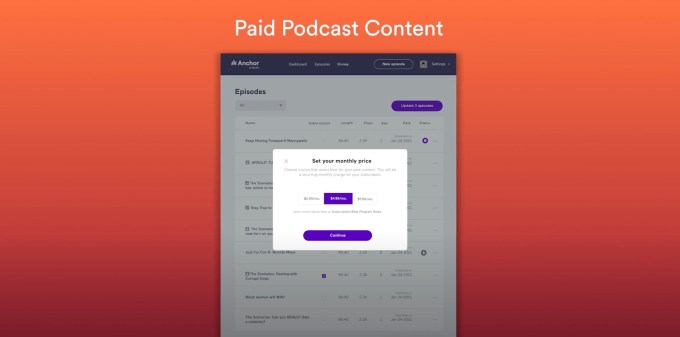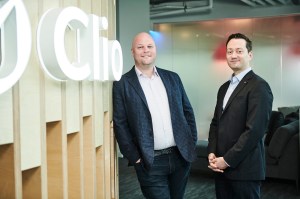- April 27, 2021
- by:
- in: Blog
Swedish digital health startup Kry, which offers a telehealth service (and software tools) to connect clinicians with patients for remote consultations, last raised just before the pandemic hit in Western Europe, netting a €140M Series C in January 2020. Today it’s announcing an oversubscribed sequel: The Series D raise clocks in at $312M (€262M) and
Swedish digital health startup Kry, which offers a telehealth service (and software tools) to connect clinicians with patients for remote consultations, last raised just before the pandemic hit in Western Europe, netting a €140M Series C in January 2020.
Today it’s announcing an oversubscribed sequel: The Series D raise clocks in at $312M (€262M) and will be used to keep stepping on the growth gas in the region.
Investors in this latest round for the 2015-founded startup are a mix of old and new backers: The Series D is led by CPP Investments (aka, the Canadian Pension Plan Investment Board) and Fidelity Management & Research LLC, with participation from existing investors including The Ontario Teachers’ Pension Plan, as well as European-based VC firms Index Ventures, Accel, Creandum and Project A.
The need for people to socially distance during the coronavirus pandemic has given obvious uplift to the telehealth category, accelerating the rate of adoption of digital health tools that enable remote consultations by both patients and clinicians. Kry quickly stepped in to offer a free service for doctors to conduct web-based consultations last year, saying at the time that it felt a huge responsibility to help.
That agility in a time of public health crisis has clearly paid off. Kry’s year-over-year growth in 2020 was 100% — meaning that the ~1.6M digital doctors appointments it had served up a year ago now exceed 3M. Some 6,000 clinicians are also now using its telehealth platform and software tools. (It doesn’t break out registered patient numbers).
Yet co-founder and CEO, Johannes Schildt, says that, in some ways, it’s been a rather quiet 12 months for healthcare demand.
Sure the pandemic has driven specific demand, related to COVID-19 — including around testing for the disease (a service Kry offers in some of its markets) — but he says national lockdowns and coronavirus concerns have also dampened some of the usual demand for healthcare. So he’s confident that the 100% growth rate Kry has seen amid the COVID-19 public health crisis is just a taster of what’s to come — as healthcare provision shifts toward more digital delivery.
“Obviously we have been on the right side of a global pandemic. And if you look back the mega trend was obviously there long before the pandemic but the pandemic has accelerated the trend and it has served us and the industry well in terms of anchoring what we do. It’s now very well anchored across the globe — that telemedicine and digital healthcare is a crucial part of the healthcare systems moving forward,” Schildt tells TechCrunch.
“Demand has been increasing during the year, most obviously, but if you look at the broader picture of healthcare delivery — in most European markets — you actually have healthcare usage at an all time low. Because a lot of people are not as sick anymore given that you have tight restrictions. So it’s this rather strange dynamic. If you look at healthcare usage in general it’s actually at an all time low. But telemedicine is on an upward trend and we are operating on higher volumes… than we did before. And that is great, and we have been hiring a lot of great clinicians and been shipping a lot of great tools for clinicians to make the shift to digital.”
The free version of Kry’s tools for clinicians generated “big uplift” for the business, per Schildt, but he’s more excited about the wider service delivery shifts that are happening as the pandemic has accelerated uptake of digital health tools.
“For me the biggest thing has been that [telemedicine is] now very well established, it’s well anchored… There is still a different level of maturity between different European markets. Even [at the time of Kry’s Series C round last year] telemedicine was maybe not something that was a given — for us it’s always been of course; for me it’s always been crystal clear that this is the way of the future; it’s a necessity, you need to shift a lot of the healthcare delivery to digital. We just need to get there.”
The shift to digital is a necessary one, Schildt argues, in order to widen access to (inevitably) limited healthcare resources vs ever growing demand (current pandemic lockdown dampeners excepted). This is why Kry’s focus has always been on solving inefficiencies in healthcare delivery.
It seeks to do that in a variety of ways — including by offering support tools for clinicians working in public healthcare systems (for example, more than 60% of all the GPs in the UK market, where most healthcare is delivered via the taxpayer-funded NHS, is using Kry’s tools, per Schildt); as well as (in a few markets) running a full healthcare service itself where it combines telemedicine with a network of physical clinics where users can go when they need to be examined in person by a clinician. It also has partnerships with private healthcare providers in Europe.
In short, Kry is agnostic about how it helps deliver healthcare. That philosophy extends to the tech side — meaning video consultations are just one component of its telemedicine business which offers remote consultations for a range of medical issues, including infections, skin conditions, stomach problems and psychological disorders. (Obviously not every issue can be treated remotely but at the primary care level there are plenty of doctor-patient visits that don’t need to take place in person.)
Kry’s product roadmap — which is getting an investment boost with this new funding — involves expanding its patient-facing app to offer more digitally delivered treatments, such as Internet Cognitive Based Therapy (ICBT) and mental health self-assessment tools. It also plans to invest in digital healthcare tools to support chronic healthcare conditions — whether by developing more digital treatments itself (either by digitizing existing, proven treatments or coming up with novel approaches), and/or expanding its capabilities via acquisitions and strategic partnerships, according to Schildt.
Over the past five+ years, a growing number of startups have been digitizing proven treatment programs, such as for disorders like insomnia and anxiety, or musculoskeletal and chronic conditions that might otherwise require accessing a physiotherapist in person. Options for partners for Kry to work with on expanding its platform are certainly plentiful — although it’s developed the ICBT programs in house so isn’t afraid to tackle the digital treatment side itself.
“Given that we are in the fourth round of this massive change and transition in healthcare it makes a lot of sense for us to continue to invest in great tools for clinicians to deliver high quality care at great efficiency and deepening the experience from the patient side so we can continue to help even more people,” says Schildt.
“A lot of what we do we do is through video and text but that’s just one part of it. Now we’re investing a lot in our mental health plans and doing ICBT treatment plans. We’re going deeper into chronic treatments. We have great tools for clinicians to deliver high quality care at scale. Both digitally and physically because our platform supports both of it. And we have put a lot of effort during this year to link together our digital healthcare delivery with our physical healthcare delivery that we sometimes run ourselves and we sometimes do in partnerships. So the video itself is just one piece of the puzzle. And for us it’s always been about making sure we saw this from the end consumer’s perspective, from the patient’s perspective.”
“I’m a patient myself and still a lot of what we do is driven by my own frustration on how inefficient the system is structured in some areas,” he adds. “You do have a lot of great clinicians out there but there’s truly a lack of patient focus and in a lot of European markets there’s a clear access problem. And that has always been our starting point — how can we make sure that we solve this in a better way for the patients? And then obviously that involves us both building strong tools and front ends for patients so they can easily access care and manage their health, be pro-active about their health. It also involves us building great tools for clinicians that they can operate and work within — and there we’re putting way more effort as well.
“A lot of clinicians are using our tools to deliver digital care — not only clinicians that we run ourselves but ones we’re partnering with. So we do a lot of it in partnerships. And then also, given that we are a European provider, it involves us partnering with both public and private payers to make sure that the end consumer can actually access care.”
Another batch of startups in the digital healthcare delivery space talk a big game about ‘democratizing’ access to healthcare with the help of AI-fuelled triage or even diagnosis chatbots — with the idea that these tools can replace at least some of the work done by human doctors. The loudest on that front is probably Babylon Health.
Kry, by contrast, has avoided flashy AI hype, even though its tools do frequently incorporate machine learning technology, per Schildt. It also doesn’t offer a diagnosis chatbot. The reason for its different emphasis comes back to the choice of problem to focus on: Inefficiencies in healthcare delivery — with Schildt arguing that decision-making by doctors isn’t anywhere near the top of the list of service pain-points in the sector.
“We’re obviously using what would be considered AI or machine learning tools in all products that we’re building. I think sometimes personally I’m a bit annoyed at companies screaming and shouting about the technology itself and less about what problem you are solving with it,” he tells us. “On the decision-support [front], we don’t have the same sort of chatbot system that some other companies do, no. It’s obviously something that we could build really effortlessly. But I think — for me — it’s always about asking yourself what is the problem that you’re solving for? For the patient. And to be honest I don’t find it very useful.
“In many cases, especially in primary care, you have two categories. You have patients that already know why they need help, because you have a urinary tract infection; you had it before. You have an eye infection. You have a rash — you know that it’s a rash, you need to see someone, you need to get help. Or you’re worried about your symptoms and you’re not really sure what it is — and you need comfort. And I think we’re not there yet where a chatbot would give you that sort of comfort, if this is something severe or not. You still want to talk to a human being. So I think it’s of limited use.
“Then on the decision side of it — sort of making sure that clinicians are making better decisions — we are obviously doing decision support for our clinicians. But if it’s one thing clinicians are really good at it’s actually making decisions. And if you look into the inefficiencies in healthcare the decision-making process is not the inefficiency. The matching side is an inefficiency side.”
He gives the example of how much the Swedish healthcare system spends on translators (circa €200M) as a “huge inefficiency” that could be reduced simply — by smarter matching of multilingual clinicians to patients.
“Most of our doctors are bilingual but they’re not there at the same time as the patient. So on the matching side you have a lot of inefficiency — and that’s where we have spent time on, for example. How can we sort that, how can we make sure that a patient that is seeking help with us ends up with the right level of care? If that is someone that speaks your native language so you can actually understand each other. Is this something that could be fully treated by a nurse? Or should it be directly to a psychologist?”
“With all technology it’s always about how do we use technology to solve a real problem, it’s less about the technology itself,” he adds.
Another ‘inefficiency’ that can affect healthcare provision in Europe relates to a problematic incentive to try to shrink costs (and, if it’s private healthcare, maximize an insurer’s profits) by making it harder for patients to access primary medical care — whether through complicated claims processes or by offering a bare minimum of information and support to access services (or indeed limiting appointment availability), making patients do the legwork of tracking down a relevant professional for their particular complaint and obtaining a coveted slot to see them.
It’s a maddening dynamic in a sector that should be focused on making as many people as healthy as they possibly can be in order that they avoid as much disease as possible — obviously as that outcome is better for the patients themselves. But also given the costs involved in treating really sick people (medical and societal). A wide range of chronic conditions, from type 2 diabetes to lower back pain, can be particularly costly to treat and yet may be entirely preventable with the right interventions.
Schildt sees a key role for digital healthcare tools to drive a much needed shift toward the kind of preventative healthcare that would be better all round, for both patients and for healthcare costs.
“That annoys me a lot,” he says. “That’s sometimes how healthcare systems are structured because it’s just costly for them to deliver healthcare so they try to make it as hard as possible for people to access healthcare — which is an absurdity and also one of the reasons why you now have increasing costs in healthcare systems in general, it’s exactly that. Because you have a lack of access in the first point of contact, with primary care. And what happens is you do have a spillover effect to secondary care.
“We see that in the data in all European markets. You have people ending up in emergency rooms that should have been treated in primary care but they can’t access primary care because there’s no access — you don’t know how to get in there, it’s long waiting times, it’s just triaged to different levels without getting any help and you have people with urinary tract infections ending up in emergency rooms. It’s super costly… when you have healthcare systems trying to fend people off. That’s not the right way doing it. You have to — and I think we will be able to play a crucial role in that in the coming ten years — push the whole system into being more preventative and proactive and access is a key part of that.
“We want to make it very, very simple for the patients — that they should be able to reach out to us and we will direct you to the right level of care.”
With so much still to do tackling the challenges of healthcare delivery in Europe, Kry isn’t in a hurry to expand its services geographically. Its main markets are Sweden, Norway, France, Germany and the UK, where it operates a healthcare service itself (not necessarily nationwide), though it notes that it offers a video consultation service to 30 regional markets.
“Right now we are very European focused,” says Schildt, when asked whether it has any plans for a U.S. launch. “I would never say that we would never go outside of Europe but for here and now we are extremely focused on Europe, we know those markets very, very well. We know how to manoeuvre in the European systems.
“It’s a very different payer infrastructure in Europe vs the US and then it’s also so that focus is always king and Europe is the mega market. Healthcare is 10% of the GDP in all European markets, we don’t have to go outside of Europe to build a very big business. But for the time being I think it makes a lot of sense for us to stay focused.”






